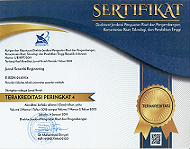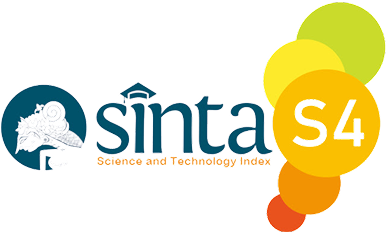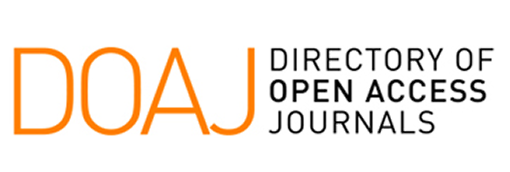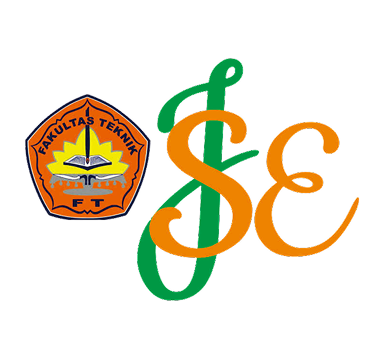Analisis Profitabilitas dan Efisiensi Operasional pada Industri Perikanan Skala Kecil di Indonesia
Keywords:
Profitability, Operational Efficiency, Small-Scale Fisheries, Business Management, Food SecurityAbstract
The small-scale fisheries industry in Indonesia plays a crucial role in food security and local economic resilience. However, the industry continues to face challenges in profitability and operational efficiency. This study employs a literature review approach to analyze the performance of small-scale fisheries through profitability indicators (net profit margin, return on assets, or ROA) and operational efficiency (input-output ratio, data envelopment analysis, or DEA). The findings indicate a positive correlation between technical efficiency and increased profit margins. The identified key barriers to financial inclusion include low financial literacy, limited technology access, and restricted market reach. Conversely, cooperatives, technical training, and business digitalization have emerged as pivotal enabling factors. This study proposes a data-driven policy approach and multi-stakeholder collaboration as a means of enhancing competitiveness and sustainability in this sector. When implemented with strategic precision, small-scale fisheries have the potential to transform into a robust component of the coastal economy, achieving global competitiveness.
References
[1] R. Dudayev, L. L. Hakim, and I. Rufiati, “Participatory fisheries governance in Indonesia: Are octopus fisheries leading the way?,” Mar. Policy, vol. 147, p. 105338, 2023.
[2] I. Sari, M. Ichsan, A. White, S. A. Raup, and S. H. Wisudo, “Monitoring small-scale fisheries catches in Indonesia through a fishing logbook system: Challenges and strategies,” Mar. Policy, vol. 134, p. 104770, 2021.
[3] C. Rusmina, M. Mawardi, M. Bakri, S. Susanti, R. Radhiana, and C. A. Surayya, “Meningkatkan Daya Saing UMKM melalui Penerapan Just-in-Time dan Teknologi Sederhana,” J. Serambi Eng., vol. 10, no. 1, 2025.
[4] M. Marlina, S. Sufitrayati, S. Amri, N. Syamsuddin, R. Radhiana, and R. M. Akbar, “Inovasi Operasional untuk Efisiensi Biaya dan Peningkatan Profit di Industri Pengolahan Limbah Plastik,” J. Serambi Eng., vol. 10, no. 1, 2025.
[5] Arsyad, S. Yana, Radhiana, Ulfia, Fitriliana, and Juwita, “Kendala Teknologi, Pendanaan dan Ketersediaan Bahan Baku Biomassa dalam Pengembangan Energi Terbarukan,” J. Serambi Eng., vol. 8, no. 1, pp. 4940–4946, 2023.
[6] F. Hanum et al., “Strategi Ekspansi Usaha UMKM dengan Pendekatan Metoda Hybrid SWOT Analisis dan AHP,” J. Serambi Eng., vol. VIII, no. 1, pp. 4991–4999, 2023, [Online]. Available: https://ojs.serambimekkah.ac.id/index.php/jse/article/view/5675
[7] M. Maryam, R. Nengsih, T. Makmur, S. Susanti, A. Arsyad, and A. R. Rahmi, “Meningkatkan Profitabilitas UMKM Pengrajin Gerabah dengan Efisiensi Keuangan dan Optimalisasi Produksi,” J. Serambi Eng., vol. 10, no. 1, 2025.
[8] I. Jalil, M. Malahayati, S. Yana, H. Heriyana, I. Ilyas, and R. Nengsih, “Optimalisasi Proses Bisnis UMKM Kerajinan Gerabah melalui Sinergi Inovasi Pemasaran dan Manajemen Risiko Terstruktur,” J. Serambi Eng., vol. 10, no. 1, 2025.
[9] U. Ulfia, R. Rahmi, Z. Yusuf, R. Radhiana, M. Mukhdasir, and A. Humaira, “Strategi Pemilihan Bahan Baku Daur Ulang untuk Meningkatkan Profitabilitas di Industri Pengolahan Limbah Plastik,” J. Serambi Eng., vol. 10, no. 1, 2025.
[10] S. Ikhbar, N. Nelly, M. Maksalmina, C. Amni, A. Arsyad, and A. A. Fansuri, “Strategi Pengelolaan Operasional untuk Meningkatkan Keuntungan dan Mengurangi Pengeluaran dalam Industri Daur Ulang Plastik,” J. Serambi Eng., vol. 10, no. 1, 2025.
[11] A. Schuhbauer and U. R. Sumaila, “Economic viability and small-scale fisheries—A review,” Ecol. Econ., vol. 124, pp. 69–75, 2016.
[12] M. Rahiminezhad Galankashi and F. Mokhatab Rafiei, “Financial performance measurement of supply chains: a review,” Int. J. Product. Perform. Manag., vol. 71, no. 5, pp. 1674–1707, 2022.
[13] R. Radhiana, M. Mukhdasir, J. Surya, N. Syamsuddin, M. Maryam, and A. Syafitri, “Pengaruh Sistem Produksi Lean terhadap Pengurangan Biaya Produksi dan Peningkatan Profitabilitas di Industri Pengolahan Limbah Plastik,” J. Serambi Eng., vol. 10, no. 1, 2025.
[14] D. J. Mills et al., “Contributions of small-scale fisheries to food security and nutrition,” Illum. Hidden Harvest. Contrib. small-scale Fish. to Sustain. Dev. FAO, Duke Univ. WorldFish, Rome, Italy, pp. 145–174, 2023.
[15] B. Vatria, “FAO SSF Guidelines: Pedoman sukarela untuk menjamin keberlanjutan perikanan skala kecil di Indonesia,” Vokasi J. Publ. Ilm., vol. 15, no. 2, pp. 88–98, 2020.
[16] BPS, “Produksi dan Nilai Produksi Perikanan Tangkap Menurut Kabupaten/Kota dan Jenis Penangkapan di Provinsi DKI Jakarta.” [Online].
[17] F. Fitriliana et al., “Peluang Investasi dan Pengembangan Energi Biomassa: Perspektif Pemanfaatan dan Daya Saing Pengembangannya,” J. Serambi Eng., vol. 8, no. 3, 2023, doi: 10.32672/jse.v8i3.6505.
[18] P. Mauliza et al., “Kendala Pemenuhan Suplai dan Permintaan Energi Terbarukan Biomassa Indonesia,” J. Serambi Eng., vol. 8, no. 3, 2023.
[19] A. Ramadhan et al., “Integrating local knowledge for inclusive blue economy: opportunity and challenge of institutional bricolage,” Aust. J. Marit. Ocean Aff., pp. 1–20, 2024.
[20] J. N. Nakamura, “Legal reflections on the small-scale fisheries guidelines: building a global safety net for small-scale fisheries,” Int. J. Mar. Coast. Law, vol. 37, no. 1, pp. 31–72, 2022.
[21] J. Zelasney, A. Ford, L. Westlund, A. Ward, and O. Riego Peñarubia, Securing sustainable small-scale fisheries: Showcasing applied practices in value chains, post-harvest operations and trade, vol. 652. Food and Agriculture Organization of the United Nations, 2020.
[22] D. Kantal, K. Arun, and P. A. Ganie, “Economic Implications of Information Technology in Aquaculture and Fisheries,” in Information Technology in Fisheries and Aquaculture, Springer, 2025, pp. 227–250.
[23] KKP, “Data dan Statistik Perikanan Tangkap RI.” [Online]. Available: https://portaldata.kkp.go.id/portals/data-statistik/layer1
[24] FAO, The state of world fisheries and aquaculture. Food and Agriculture Organization of the United Nations, 2018.
[25] N. Syamsuddin, S. Yana, N. Nelly, and ..., “Permintaan Pasar untuk Produk dan Layanan Energi Terbarukan (Perspektif Daya Saing Energi Terbarukan Indonesia),” J. Serambi Eng., vol. VIII, no. 1, pp. 4965–4977, 2023, [Online]. Available: https://ojs.serambimekkah.ac.id/jse/article/view/5673%0Ahttps://ojs.serambimekkah.ac.id/jse/article/download/5673/4156
[26] M. Dağtekin, O. Uysal, S. Candemir, and Y. Genç, “Productive efficiency of the pelagic trawl fisheries in the Southern Black Sea,” Reg. Stud. Mar. Sci., vol. 45, p. 101853, 2021.
[27] T. J. Coelli, D. S. P. Rao, C. J. O’donnell, and G. E. Battese, An introduction to efficiency and productivity analysis. springer science & business media, 2005.
[28] A. C. E. Dias et al., “From vulnerability to viability: A situational analysis of small-scale fisheries in Asia and Africa,” Mar. Policy, vol. 155, p. 105731, 2023.
[29] M. Szymkowiak and M. Rhodes-Reese, “A livelihoods assessment of new entrants within the US fisheries agriculture continuum,” J. Rural Stud., vol. 95, pp. 15–25, 2022.
[30] J. Liu, “From afforestation to forest landscape restoration in DPRK: Gaps and challenges,” Trees, For. People, vol. 8, p. 100243, 2022, doi: https://doi.org/10.1016/j.tfp.2022.100243.
[31] H. Canton, “Food and agriculture organization of the United Nations—FAO,” in The Europa directory of international organizations 2021, Routledge, 2021, pp. 297–305.
[32] R. Radhiana et al., “Strategi Keberlanjutan Pembangunan Energi Terbarukan Jangka Panjang Indonesia: Kasus Biomassa Energi Terbarukan di Sektor Pertanian, Perkebunan dan Kehutanan Indonesia,” J. Serambi Eng., vol. 8, no. 1, 2023.
[33] N. J. Rowan, “The role of digital technologies in supporting and improving fishery and aquaculture across the supply chain–Quo Vadis?,” Aquac. Fish., vol. 8, no. 4, pp. 365–374, 2023.
[34] C. C. for I. C. on E. and D. (CCICED) S. wangrong881010@ 163. com, “Low-Carbon and Resilient Urban Development and Adaptation to Climate Change: Fokus on the Yangtze basin,” in Building an Inclusive, Green and Low-Carbon Economy: CCICED Annual Policy Report 2022, Springer, 2023, pp. 169–227.
[35] D. Darmawijaya, “Pembangunan Pusat Data Hijau sebagai Wahana Percepatan Pembangunan Ekonomi Berkelanjutan,” Bappenas Work. Pap., vol. 4, no. 1, pp. 64–83, 2021.
Downloads
Published
Issue
Section
License
Copyright (c) 2025 Marlina, T.M Haja Almuqaramah, Cut Rusmina, Rahmi (Author); Muhammad Zidane (Translator)

This work is licensed under a Creative Commons Attribution 4.0 International License.












